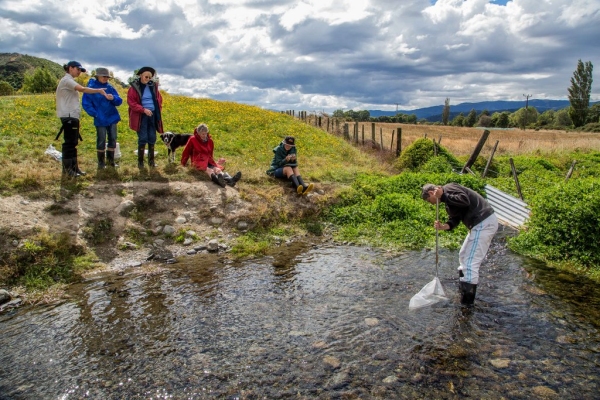“Citizen science” is a buzz word in environment and conservation circles these days. New technologies and increasing concern about the state of our environment are coming together, and more members of the public are getting out there to monitor everything from snowfall to shifts in species distributions. With freshwater quality still the number one environmental issue of public concern in New Zealand, it is not surprising that stream monitoring is a growing area for citizen science.
Researchers and councils are also interested. Citizen science has the potential to bring in much greater amounts of data than researchers and monitoring agencies are able to collect on their own. It could provide a stepping stone to improving public involvement in government freshwater planning. Yet so far, there has been little support from any official agencies for citizen scientists to monitor streams, and no national-scale databases for volunteers to upload and share their data. Why?
There is the concern that the data produced by volunteers might not be reliable enough to be useful. And there is little information about the other benefits citizen scientists gain by monitoring streams regularly. NIWA has recently finished a landmark study looking at both of these areas. From autumn 2014 to winter 2015, nine volunteer community groups from Auckland to Nelson monitored their local stream in parallel with their regional council. Each month they measured algae and various aspects of water quality (temperature, visual water clarity, oxygen, nitrate, E. coli bacteria, etc.), using simple low-cost equipment based on NIWA’s Stream Health Monitoring and Assessment Kit (SHMAK). Every six months they sampled the large invertebrates (insects, crustaceans, etc.) living at the bottom of the stream, and used the invertebrate species to calculate a “stream health score”. We compared their results with the results councils got using their professional equipment and professional skills. We found a very strong agreement for some water quality measurements (such as temperature) and a moderately strong agreement for the other measurements. Most pleasingly, volunteers and professionals agreed well for E. coli bacteria and visual clarity (which are used together to describe whether rivers are “swimmable”) and we plan to add to the SHMAK kit in a proposed major upgrade. We were able to show that with a small amount of training and ongoing support from an agency like NIWA or a regional council, citizen scientists are able to collect data that is reliable enough to support professional data in official reporting and freshwater planning.
After our volunteers had finished collecting data for the study, we interviewed them about their experiences. We found that volunteers first got involved in stream monitoring mainly because of a concern for the environment, but the enjoyment of being outside, being with other like-minded people and learning new things were important in keeping them going. Having the opportunity to share their new knowledge with others gave them a strong sense of achievement that also kept them going. All volunteers said that support from an agency such as their regional council would be very important in continuing long-term, and all wanted a website where they could share their results with the public, environmental decision-makers and other monitoring groups.
Many of our volunteers already had a background in science, but those with less experience found the monitoring helped them learn about how science is done. Most participants said they had learned a lot about stream ecology and water quality. They also said they had become more aware of freshwater issues appearing in the news, and more aware of whether other streams they saw were healthy or not. Most of the volunteers said they became much more confident in speaking about freshwaters. A few said they might therefore get involved in council-led freshwater planning, but more of the volunteers were taking their knowledge to people in their communities, e.g. introducing school groups to stream monitoring.
The results of this study are available in a NIWA report, and will soon be published in two scientific papers.
Project Team:
Elsemieke Kin, Aslan Wright-Stow, Rob Davies-Colley and Rebecca Stott

